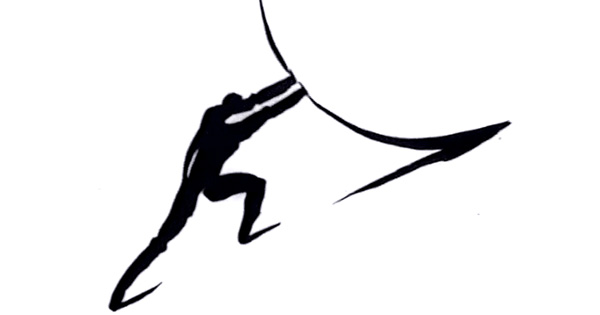Compared to USB-A, not really that much of a game changer (it’s still the most common for me). Though I do not miss the three rotations to get it in.
Compared to Micro-USB? Holy fuck, I almost refuse to buy anything still using Micro-USB ported now. Mainly because I can’t never find the fucking cable for it.
Though I do not miss the three rotations to get it in.
The holes point up or to the right.
Fucking awesome, it is. When I travel, I take 1 laptop power cord. Charges my phone, laptop, Switch, and backup battery. (The backup battery’s output ports are USB-A, but it’s got a lil converter cable that stays in the lil bag that the backup battery is stored in.)
So far it’s a mess.
I still have Micro USB devices, so I need two cables or USB-C→Micro USB adapter.
I have PCs without USB-C ports, so another adapter needed USB-C → USB-A.
But, I can now “dock” my new-ish laptop with only one USB-C ↔ USB-C cable to a monitor.
Monitor gives power.I’m still in the messy stage, but I’ve made preparations for C. Pretty soon I’ll get a newer used phone and tablet, and they’re both going to be type C.
Currently I have a few things that use C, so I’ve already got some cables and chargers for them. Once the transition is complete, I’ll get rid of a bunch of old cables.
If your PC has PCIE slots you can get a USB-C card for around $25
Make sense, thanks.
It’s been more of a pain in the arse than initially expected.
Most motherboards (for example) only have 2-4 USB-C ports, meaning that I still need to employ A-C and C-C cables for peripherals etc.
My main gripe is that the standard just tries to do too many things without clear delineation/markings:
-
Is it a USB 2.0 (480Mbit), 5Gbit, 10Gbit or 20Gbit cable? Can’t really tell from the plug alone.
-
More importantly, for charging devices: How the heck do I determine maximum wattage I can run?
For all its faults, at least the blue colour of a USB-3.0 plug (or additional connectors for B/Micro) made it easy to differentiate !
Now I’m eyeing up a USB Cable tester just to validate and catalogue my growing collection! 🤦🏻♂️
USB Cable tester
Great idea, and then:

I was actually thinking coloured O rings to define specs, but that still means I’d need to have a colours guide somewhere too…
…yours might be a more practical solution. 🤔
You could fit some key numbers and letters on those O rings, I like it!
It’s even more annoying that there are different possible pinouts in the port itself without clear labling. So always use the one cable that came with the peripheral, or you have a chance to fry it
Just recently I had a tech store guy gently but repeatedly insist to me that a certain USB cable was a USB 3 cable because it was type C on both ends. I didn’t wanna argue with him, but the box clearly said “480 Mbit”, so it was just a type C charging cable.
Of course the box designers were hoping you’d make that mistake so they didn’t write USB 2 on there, just the speed. And most boxes won’t even have that, you’ll just have to buy it and see.
But I mean if someone who spent their whole life fixing computers can get something that basic wrong, then it’s really a hopeless situation for anyone who isn’t techy.
And of course once it’s out of the box it’s anyone’s guess what it is. It’s a real mess for sure.
I wonder about this too. Can I plug my laptop’s USB-C charger into my phone? Or is that a big nono
Yes, you can. The charger and the device communicate between one another what they can support, and pick the highest one they both agree on.
E.G. my laptop charger can charge at full speed (100W) for my MacBook, but only at 20W for my iPhone.
That bit is pretty straightforward and transparent to end users (there are a few rare conditions where devices might not agree on the fastest, and have to fall back to a slower one); the issue is more with cables not having sufficient gauge wire, or missing connections that prevent the charger and device from communicating their full functionality.
I charge by Bluetooth headphones ‘pod’ with my Steam Deck charger and it seems to be ok.
The deck charger uses USB PD. It will charge anything that supports the standard as fast as possible (up to its rated 65W) and use normal 5v USB for everything else.
Yes.
For the power matter, you don’t. The device being charged, the charger, and cable does.
If you mean what is the maximum wattage that will actually be used, that should be the maximum possible between the charger, cable, and device. So look at their specs. Whichever has the lowest maximum, is what the others will match.
USB PD defines a protocol for the device and charger to determine max safe power. If the cable is replacable (not attached to the charger), it must be rated for PD and be able to tell the charger it can handle more than just the usual 5 volts at 2 amps.
USB PD chargers only output the maximum safe amount of power. That’s why I can use my 65W steamdeck charger to charge my phone if I want to. It just outputs normal USB charger power if the device on the other end can’t verify it can handle more.
It’s also why my SteamDeck charger is what I use to fast charge my phone, because it can actually talk to it using the USB PD protocol to request the voltage and amps it needs to fast charge.
To clarify; I have a 100W Ugreen Nexode 4 Port USB Charger that I use to charge my laptop (~60W), Steam Deck (~40W), iPhone (~20W) and AirPods (~5?W).
The problem is if my original product cable has gone walkabout temporarily and I need to use a random one to stand in - there is no clear way of telling if I’m accidentally using a 5W-max cheap cable to try and keep my laptop charged while working.
Obviously there are some context clues depending on cable thickness etc., but with how common cosmetic braiding is becoming a thing - even that’s getting harder to rely on.
Some kind of cable labeling would be nice.
-
Not at all a game changer, for me.
I mean, it’s just another and one more type of cable. Sure, in theory it’s simpler than many various cables and it’s even less stupid than the previous USB types, but it’s still a mess.
At least, for non-geek me, those cables are a mess as I need to be able to distinguish between the exact same cable to find which one is USB-C or Thunderbolt, between the various versions of USB-C itself, and then between USB-C that comes with or without power delivery, and with what power limitation? And then, despite USB-C supposedly being a standard there are still too many cables that just won’t work with certain devices because reasons.
Add to that the many USB-C docks (and dongles) that work… more or less reliably and more or less as marketed (even more so under Linux, but those issues exist under Mac and under Windows as well).
Older cables and ports were cumbersome, and thick and whatever but, as far as I’m concerned, for the most part they just worked like they were supposed to. And I never had an issue knowing which cable to plug into which port as they all looked, you know, different.
Nowadays, I have to label each one of my USB-C cable with some masking tape so I can identify it in a glimpse without wasting my time trying them all one by one.
Edit: some clarifications.
Works great, rarely have issues with the port breaking unlike prior small usb standards, it’s nice how ubiquitous it is so I have way less random cable connectors around.
A big one. No more brittle micro usb, which would eventually become loose and start falling out when charging. Being able to charge my laptop using my phone charger is also good.
With a laptop and phone which both can use it my backpack while travelling is so much lighter and less bulky. For me it absolutely was a game changer, I just don’t like that I need to carry a USB a to C adapter for all the legacy USB A ports.
Really hasn’t been much of one. I still own devices that charge from MicroUSB, a lot of peripherals are still USB-A, there hasn’t been any significant movement by the industry overall to move everything to C, so mostly it means I just need to carry more cables.
I certainly like it better, it’s an improvement, but “game changer” is strong. I’m slowly replacing gadgets to USB C through attrition. The charge port has ceased to be the failure point for any of the gadgets I own. My pile of spare cables is still excessive, but moving further back in my storage closet because I need them less and less.
Total game changer. Plug all my peripherals into my monitor. USB C from my monitor to my work laptop. After work I plug it into my home desktop. Also just having one charger and one cable for my phone, steam deck and laptop is amazing especially for work trips.
Last week I found out that there are off-brand batteries for my DSLR cameras that can be charged directly through USB-C so I don’t have to pack a different charger for every camera. Let that sink in!
Overall pretty great, in a pinch I can charge my laptop on a Nintendo Switch power supply. Now if I could just upgrade the last few remaining Micro-USB and Lightning devices without spending a fortune…
I was pretty fucking disappointed how flimsy the jacks are.
I’ve had 3 phones and a laptop I had to replace because the USB-C jack started to wiggle and wouldn’t connect anymore.Well, for me, the selling points are:
-
Versus earlier versions of USB, it’s reversible. This isn’t a game changer, I guess, but it’s definitely nice to not have to fiddle plugs around all the time.
-
I don’t know if it’s the only form of USB that does USB PD – I’d guess not – but in practice, it seems to be pretty strongly associated with USB PD. Having USB PD isn’t essential, but it makes charging larger devices, like laptops, a lot more practical. I can lug around a power station that doesn’t need to have an embedded inverter.
I still feel that it’s kind of physically small and weak compared to USB A. That’s an okay tradeoff for small portable devices that don’t have the space for larger connectors, but I’m kinda not enthralled about it on desktop. I worry more about bending connectors (and I have bent them before).
So for me, I’d say that it’s definitely nice, but not really in a game changing sense. I could do the things it can do in somewhat-worse ways prior to USB-C.
-
So much harder to solder, making repairing my stuff more difficult :(
Also, a USB cable is no longer a USB cable. Now I have to guess what the rated wattage was, if it’s power only/data only/mixed.
All in all, a step back in my opinion.
Thats interesting - how many wires are in the actual sleeve, compared to an older USB?
The receptacle is the issue - it can have up to 24 pins (though usually it’s 12ish), all bunched up in just a slightly larger space than on a micro usb receptacle which has 4 pins. So it takes some good skill to replace.
Oh wow, yeah that must indeed be a pain to solder. Though I guess there’s some redundancy built-in, such that if one wire goes down the cable can still deliver something?
Though I guess there’s some redundancy built-in, such that if one wire goes down the cable can still deliver something?
You guessed wrong! If one is misconnected the whole thing breaks down :) It’s a nightmare for repairability, as the plug is often the first thing to fail
Power only USBC cables are super against the standard and i don’t think data only cables can exist at all?
















